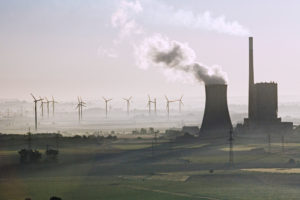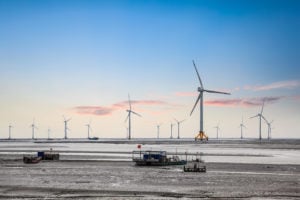We humans are nothing if not resilient. The shocks of 2020 changed us as a global society but did not crush us. It is amazing how quickly many of us have transitioned to a “new normal”. Perhaps this transition and sense of rebirth into a new experience of humanity is precisely what President Xi Jinping intended when he said: “We need to adhere to an ecological civilization and increase the drive for building a beautiful world,” during his remarks to the UN Biodiversity Summit in September 2020.
Global society learned from 2020 that we are capable of changing rapidly when our survival is at stake. Now, we face a stark choice: if we hold on to the vestiges of the past, the horrors of 2020 are an indicator of the misery we will subject humanity to experience. We can choose to face our challenges, cut the bonds of our reliance on burning fossil fuels and bet on a “beautiful world”, a thriving economy built on clean energy, with better health and abundant jobs. The resources governments are ploughing into economic recovery must signal this trajectory now, to additionally unleash private finance and to harness and scale up technological advances we already have at our disposal.
We are at the beginning of the most decisive decade in human history. We need to cut global greenhouse gas emissions an unprecedented 50% by 2030, eventually descending to net zero by 2050. This is what science demands if global warming is to be limited to 1.5C. The momentum of the past five years offers hope, but how we move forward in the years ahead is vital. We have every incentive to undertake what is necessary to realise a better economy, in emerging from a crisis that has changed the way we have to live together on Earth.
China has a pivotal role to play in forging the global transition as it shapes its own destiny, particularly as it sets out its 14th Five Year Plan. The issue is not whether China is committed to low-carbon development – it is the country’s stated aim to achieve carbon neutrality by 2060. What remains to be seen is the pace and scale of transition. According to a Tsinghua University study, a substantial increase in the pace of China’s decarbonisation is necessary for the world to avert the worst impacts of climate change.
By the time an older, industrialised economy like the EU meets its goal for net zero by 2050, it will have undergone a transition in 50-70 years. China will need to achieve this in 30-40 years. That is entirely within the country’s grasp and is beneficial to attracting international investment, offering opportunities for China’s companies and low-carbon development pathways.
In 2016 not a single country had a net zero (carbon neutrality) goal or policy. Now 126 countries have adopted policies to achieve net zero by 2050 or earlier. China’s entry into renewables, battery storage and electric vehicles have contributed greatly to this momentum. It is clear that Chinese policy incentives drive scale, creating the economic case for technologies required for systemic change.
90%
of the power capacity added globally in 2020 was from renewable sources
For the past five years, China has set the pace for renewable energy, in large part through domestic policies linked to social issues, such as air pollution and health. In 2020, despite supply chain disruptions caused by the pandemic, renewables accounted for 90% of the power capacity added globally, benefitting many, including Chinese companies that manufacture 60% of all solar panels.
The country has the chance to go much faster to wean itself off fossil fuel reliance and perhaps beat its own target of peaking emissions before 2030. Committing to doing so would no doubt unleash ingenuity within the country and spur decarbonisation around the world. The potential ripple effect on China’s competitiveness could be enormous.
Coal still accounts for about 58% of China’s energy mix and must be eliminated by 2050 if the country is to meet the most secure climate pathways. Continuing to improve storage capacity for renewables has been a missing link but battery storage – which did not exist plausibly five years ago – is already at a tipping point and with investment and systemic policy can rapidly overcome renewables intermittency and enable greater scale. This transition has the potential to vastly improve poverty and quality of life, since renewables offer three times the jobs intensity of fossil fuel energy, without the negative health impacts resulting from coal.
China’s energy transition can clearly influence the global pursuit of climate goals. In 2021, as the nations of the world come together for international climate negotiations – COP26 – in November, all eyes will be on those countries forging a rapid energy transition. China’s actions will encourage many others. But additionally, through its international financing strengths, China can support poorer countries, who will struggle to recover from the economic crisis, to meet the conditions for carbon neutrality.
Currently, China is a major investor in coal-fired power in Asia and Africa. These investments lock nations into decades of polluting energy, with social costs burdening countries that can ill afford them. A transition of China’s international investment strategy through the Belt and Road Initiative, to mirror more closely its domestic low-carbon development framework, is a game-changer.
A beautiful world is indeed possible and is there for us to choose. But the road toward it is narrowing with every passing month. Will China drive us further and faster? My hope is that the answer is a resounding ‘yes’.








